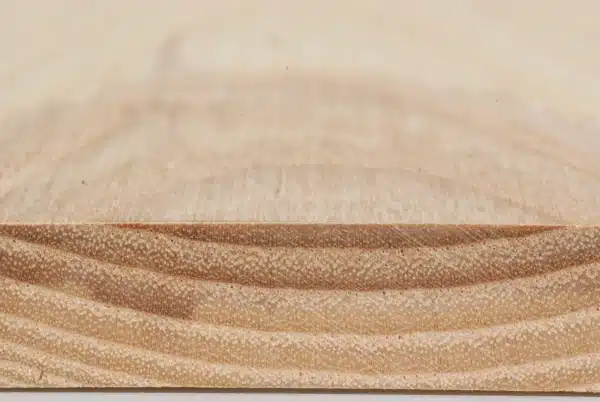
| Origin | Europe, Middle East, North America |
| bulk density | 0,45-0,69-0,86 g/cm³ |
| durability class | 5 |
| Compressive strength | 20-44-68 N/mm² |
| flexural strength | 49-102-178 N/mm² |
| Differential shrinkage (radial) | 0,17-0,21% |
| Differential shrinkage (tangential) | 0,27-0,38% |
| PH value | ≈ 5,8 |
| wood color | light yellow |
| wood structure | multi-row, large early wood pores, no alternating twisting growth |
| Usage | Interior, dynamically stressed parts such as sports equipment, tool handles, ladders, boat oars and musical instruments |
The ash, an important wood species in North America and Europe, is one of the facultative heartwood producers. The color core can only develop later, usually from the age of 40, due to external factors such as injuries. With its light color and ring-pored structure, ash is an important source of decorative wood. The ash tree reaches heights of up to 40 m and a trunk diameter of 2 m, with a maximum age of around 250-300 years. The common ash is native to Europe and is one of the tallest deciduous trees. It is found in forest communities in wetter or drier locations. Ash wood, a noble hardwood, is valued for tool handles, sports equipment and bent parts. However, widespread ash dieback since the 1990s, caused by the fungus Hymenoscyphus fraxineus, has threatened this important tree species.
It is also an important hardwood in North America and Europe and is characterized by its wide, white-yellowish sapwood (up to 19 cm) and the light yellow heartwood. With the possibility of an optional color core that varies from gray-brown to olive, the ash tree shows an impressive variety of colors. Its ring-pored, structurally rich wood is hard, elastic and easy to work with. It is suitable for various applications such as decorative veneers, floors, stairs, and furniture. Drying is gentle, which prevents cracks. Due to its low natural durability, ash wood is primarily used indoors. It is ideal for dynamically stressed parts such as sports equipment, tool handles and musical instruments. Thermal modification can improve durability and allows outdoor use. The common ash tree reaches heights of up to 40 m and is known for its straight trunk axis. Fan-shaped branches and linear shoots characterize its growth habit.
Ash dieback began in Poland in the 1990s and spread across Europe, including Sweden, Austria, Germany and Denmark. Caused by the fungus Chalara fraxinea, the disease shows symptoms such as dead spots, wilting and leaf loss, leading to tree death. In Denmark, at least 2013% of ash trees will be affected by 95. The fungus, originally from Asia, threatens European ash trees. Researchers are looking for resistant varieties.
Revered in Nordic mythology as the world tree Yggdrasil, the ash tree has been known for medicinal purposes since ancient times. Ash leaves were recommended by Hildegard von Bingen for diuretic tea. In mythology, humans descend from the ash tree, and it plays a central role as Yggdrasil.
Sources: Wikipedia , Wood from the specialist (GD Wood)



